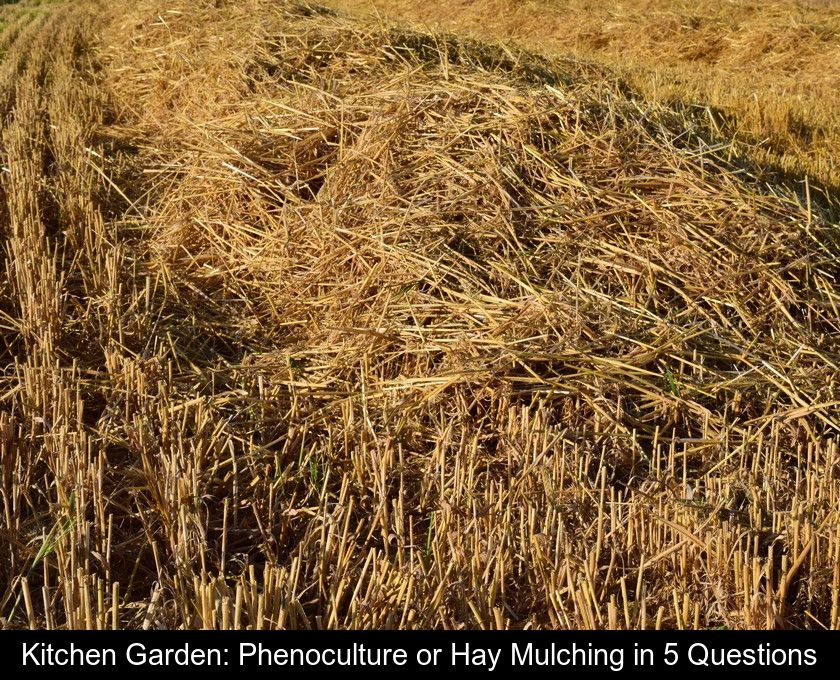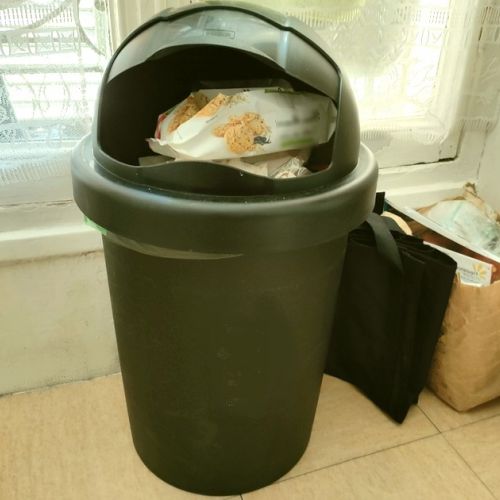Kitchen Garden: Phenoculture Or Hay Mulching In 5 Questions
Gardening method invented by a French agronomist, phenoculture involves covering the soil with hay. According to Didier Helmstetter, the inventor of this agroecological technique, hay is the best natural material for mulching and facilitating the cultivation of vegetables. We invite you to discover this method "for lazy gardeners" in 5 questions.
Where does the name phenoculture come from?
In Latin, hay is called "faenum." Therefore, the gardening method of covering the ground with hay should be called "fénoculture" with an f.
However, the French agronomist Didier Helmstetter, who discovered this method, decided to replace the "f" with "ph" to emphasize the phenomenal aspect of this agroecological technique.
What is the principle of phenoculture?
Didier Helmstetter is the author of a book titled "The Lazy Gardener's Vegetable Garden." In this book, he explains that hay is the best possible natural material for mulching the soil and perfectly nourishing all the organisms that develop there, such as earthworms, fungi, and bacteria.
This expert in agroecology argues that it is possible to grow your own vegetables without too much effort, thanks to a simple gardening trick: covering the ground with hay!
In April 2022, he published another work with Tana editions: "The Lazy Gardener's Vegetable Garden Affected by Climate Change." He describes how to adapt your vegetable garden to heatwaves and other climate changes, still without any soil work, fertilizers, compost, or raised beds.
Why make a hay cover?
Just like other forms of plant mulch, hay plays 4 important roles when used in phenoculture:
• It limits the growth of weeds.
• It reduces the need for watering.
• It reduces soil labor.
• It limits temperature fluctuations at ground level.
When installed in a thick layer, hay keeps the soil in darkness. This simple trick saves gardeners a lot of work because weeds (or at least the vast majority of them) cannot germinate. It is estimated that more than 90% of weed seeds do not germinate under mulch.
Mulching with hay also helps to limit the evaporation of water from the soil surface and increases the porosity of the earth. Thanks to intense biological activity, the soil becomes more permeable and captures every drop of water like a sponge. Conversely, more compacted soil promotes the runoff of irrigation water or rainwater.
Before laying down the hay layer, it is recommended to loosen the soil if necessary. Subsequently, the soil will maintain its loose structure due to the mulch as its surface will remain moist and be protected from climatic aggressions such as burning sun, wind, and heavy rains.
Finally, hay serves to protect the soil from temperature variations, during very hot summer days or periods of frost in winter. Mulching helps to maintain a minimum temperature, a few degrees higher than the ambient air, even in the middle of winter. It acts like a real blanket and preserves the biological activity that continually enriches the soil of your vegetable garden.
What are the specific benefits of hay?
If you're already accustomed to mulching the soil of your vegetable garden, you may argue that hay isn't the only material that can be used. There are many alternatives such as using bark, tree chippings, or straw. However, Didier Helmstetter is adamant: hay is the best option.
Hay is a grass that has been cut when its flower begins to form. It is then dried and rolled to form the well-known hay bales. In his book, the French agronomist explains that this material has several advantages due to its composition.
This material, which is fundamental to phenoculture, contains nitrogenous substances, cellulose, and soluble sugars. It simplifies the maintenance of the vegetable garden because it constitutes a real feast for the soil organisms, providing them with just the right amount of nitrogen, carbon, and energy to thrive.
5- Why is hay also a good fertilizer?
In phenoculture, hay is not just an excellent material for mulching. It's also a natural fertilizer that promotes the growth of plants and vegetables. Over time, the decomposition of this mulch provides your plants with all the nutrients they need for their growth.
Not only do you have less need to weed, till the soil, and water, but you can also do without adding fertilizers to your vegetable garden! In summary, according to Didier Helmstetter, covering the ground with hay is a magical trick to grow vegetables without having to put in much effort...









